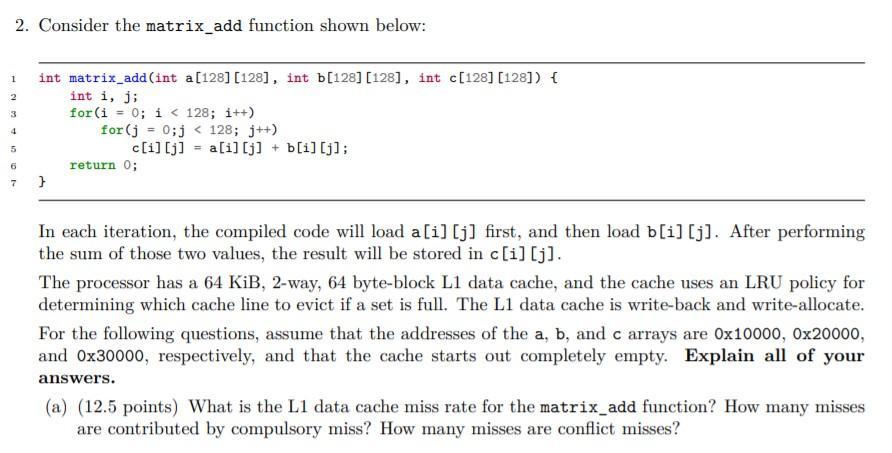Answered step by step
Verified Expert Solution
Question
1 Approved Answer
2. Consider the matrix_add function shown below: 1232710 107 4 5 6 } int matrix_add(int a[128] [128], int b[128] [128], int c[128] [128]) {


2. Consider the matrix_add function shown below: 1232710 107 4 5 6 } int matrix_add(int a[128] [128], int b[128] [128], int c[128] [128]) { int i, j; for(i = 0; i < 128; i++) for(j=0;j < 128; j++) return 0; c[i][j] = a[i][j] + b[i][j]; In each iteration, the compiled code will load a[i][j] first, and then load b[i][j]. After performing the sum of those two values, the result will be stored in c[i][j]. The processor has a 64 KiB, 2-way, 64 byte-block L1 data cache, and the cache uses an LRU policy for determining which cache line to evict if a set is full. The L1 data cache is write-back and write-allocate. For the following questions, assume that the addresses of the a, b, and c arrays are 0x10000, 0x20000, and 0x30000, respectively, and that the cache starts out completely empty. Explain all of your answers. (a) (12.5 points) What is the L1 data cache miss rate for the matrix_add function? How many misses are contributed by compulsory miss? How many misses are conflict misses? (b) (12.5 points) If the L1 hit time is 1 cycle, and the L1 miss penalty is 20 cycles. What is the average memory access time?
Step by Step Solution
There are 3 Steps involved in it
Step: 1

Get Instant Access to Expert-Tailored Solutions
See step-by-step solutions with expert insights and AI powered tools for academic success
Step: 2

Step: 3

Ace Your Homework with AI
Get the answers you need in no time with our AI-driven, step-by-step assistance
Get Started


